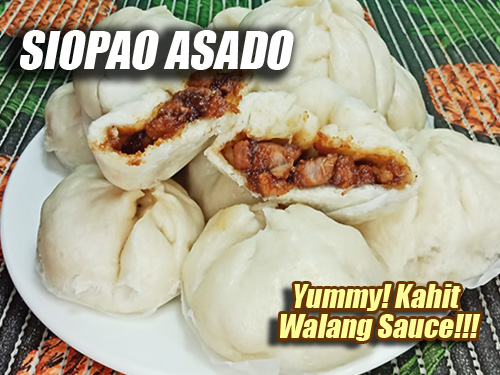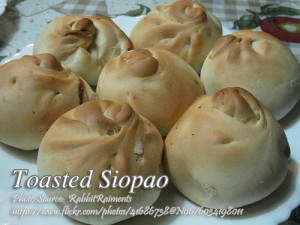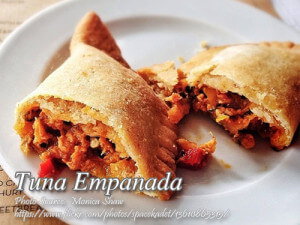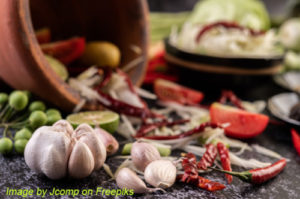Siopao asado is a popular Filipino dish that has its origins in China. This dish is a type of dim sum that is similar to a steamed bun, with a savory filling inside. The most popular filling for siopao is asado, a sweet and savory combination of sliced pork, soy sauce, hoisin sauce, garlic, and onions. However, other fillings such as bola-bola (meatball), chicken, or vegetables can be used.
While some people may think that making siopao is difficult, it is actually quite easy if you have experience kneading dough. The only tricky part is twisting and sealing the dough once you have finished wrapping up the filling. And the rest of the process, like steaming the siopao, is as simple as boiling an egg. In this article, we will share a recipe for making siopao with asado filling.
Siopao Asado: A Taste of Home in Every Steamed Bun
There’s something magical about biting into a soft, pillowy siopao asado and savoring the sweet and savory filling that bursts with flavor. For many Filipinos, this iconic steamed bun is more than just a snack; it’s a nostalgic reminder of family gatherings, merienda on rainy afternoons, and trips to the local panaderia.
I still remember the first time I learned to make the siopao. It was a Sunday afternoon, and my Tita Cora, who makes the best steamed buns in our barrio, invited me to her kitchen. She always joked that if you could master kneading dough, siopao-making was “as easy as pie.” That day, her kitchen smelled of soy sauce, garlic, and hoisin sauce, and it felt like I was uncovering a little piece of culinary history.
The History of Siopao Asado
The siopao asado we know and love today traces its roots to Chinese cuisine, specifically the char siu bao—a steamed bun filled with barbecue pork. When Chinese immigrants brought their food traditions to the Philippines, siopao became a popular snack, adapting to local tastes with its sweet-savory filling and soft white dough.
While asado, a blend of pork, soy sauce, sugar, and other seasonings, is the most beloved filling, there are also other variations like bola-bola (meatballs) or chicken. Still, there’s something about the classic dimsum that feels like coming home.
Perfecting the Siopao Asado Dough
The secret to a soft, fluffy siopao lies in the dough. My Tita Cora always said, “Patience is the key.” She would prepare the yeast mixture, letting it bubble and froth while we chatted over coffee. The yeast, activated with a little sugar and lukewarm water, is the heart of the dough, giving it that airy rise.
Once the yeast was ready, we combined it with sugar, salt, oil, and flour, kneading the mixture until it became smooth and elastic. Kneading isn’t just about mixing—it’s about creating structure, ensuring the dough will rise evenly and hold its shape during steaming. The dough rested under a damp cloth, a little ritual that allowed it to double in size, ready to embrace the flavorful asado filling.
Crafting the Perfect Asado Filling
The asado filling is the soul of siopao. In our family, it’s always been about balance—just the right amount of sweetness from sugar, a hint of saltiness from soy sauce, and a touch of depth from oyster and hoisin sauces.
When I cook the filling, I start by sautéing garlic and onions until fragrant, the aroma filling the house and summoning curious family members into the kitchen. Sliced pork is added next, browning lightly before being simmered in the sauce mixture. A bit of cornstarch slurry is stirred in toward the end, thickening the sauce to perfection.
The result? A luscious, sticky pork filling that’s so good you might catch yourself sneaking a few spoonfuls before it makes its way into the dough.
The Art of Wrapping and Steaming
Wrapping siopao is where patience truly pays off. My cousin Jun taught me a technique he picked up from his trip to Cebu. He said to roll the dough evenly and place a generous spoonful of filling in the center. Then, gently fold and twist the edges to seal the bun. “The twist,” he’d say, “is like adding your signature.”
To prevent sticking, we placed each bun on a small square of wax paper before setting them in the steamer. Steaming is the final step, and it’s crucial to get it right. The buns need just 10 to 15 minutes to cook, their surfaces turning smooth and soft. Opening the steamer lid to reveal a batch of perfectly puffed siopao is a joy that never gets old.
Why These Techniques Work
Each step in making siopao asado has a purpose. Activating the yeast ensures the dough will rise beautifully, while kneading develops gluten for a smooth texture. Resting the dough allows it to relax and rise, making it easier to work with. Simmering the asado filling intensifies the flavors, and sealing the buns properly keeps all that goodness inside during steaming.
The steaming process itself is gentle, preserving the soft, fluffy texture of the bun while cooking the filling perfectly. It’s these small but intentional steps that make siopao a dish worth mastering.
A Nostalgic Treat
Making siopao asado is more than just preparing a recipe—it’s a way of connecting with family, culture, and tradition. Every bite reminds me of Tita Cora’s laughter in the kitchen, Jun’s stories from Cebu, and the warmth of home. Whether you’re a beginner or a seasoned cook, siopao asado is a dish that promises not just flavor, but also heartwarming memories.
So, gather your ingredients, take your time, and enjoy the process. Who knows? Maybe one day, you’ll be the one teaching a loved one how to make this timeless Filipino favorite.
Siopao Asado Recipe
Ingredients
For the siopao dough:
- 4 cups flour
- 2 tsp dry active yeast
- 2 Tbsp white sugar for the yeast
- 3 Tbsp shortening or lard
- 1/2 cup sugar for the flour
- 1 tsp baking powder
- 1 and 1/3 cups warm water
- 1/4 tsp salt
For the pork asado filling:
- 1/2 kilo pork slice into small cubes
- 3 Tbsp cooking oil
- 6 cloves garlic minced
- 1 medium size onion minced
- 2 Tbsp cornstarch dilute in 1/4 cup water
- 1/8 cup soy sauce
- 1/4 cup sugar
- 1 Tbsp oyster sauce
- 1 Tbsp Hoisin sauce optional
- 2 cups water
Instructions
How to Cook Siopao Asado:
- Prepare the asado filling first. In a skillet, heat oil and saute garlic and onion.
- After the onions become transparent, add the sliced pork and stir fry until the pork becomes light brown.
- Then add in the soy sauce, oyster sauce, hoisin sauce and sugar then stir cook then add 2 cups water and simmer for at least 45 minutes.
- Add in the diluted cornstarch and stir cook until the sauce becomes thick. Set aside.
- To make the dough, soften yeast and 2 tablespoon sugar in lukewarm water. Set aside for from 10 to 15 minutes.
- Mix together sugar, salt, and oil in a bowl. Add softened yeast. Add half of the flour and mix well. Add baking powder.
- Add remaining flour and continue mixing till well blended; knead on floured board until smooth.
- Shape the dough into a ball and place in a greased bowl. Grease surface of dough.
- Cover with wet cloth and let rise for from 30 to 40 minutes in a warm place.
- Punch down dough, divide it into desired sizes, form into balls and let them rise again for 30 minutes.
- Flatten dough pieces with a rolling pin. Use spoon on prepared asado filling into the center.
- Wrap the filling by crimping the edges and seal the dough by twisting the top and shape into small balls.
- Place a piece of clean wax paper at the bottom of the balls to prevent them from sticking to the steamer.
- Let the balls rise for from 1 to 1 and 1/2 hours or until double in bulk.
- Steam for from 10 to 15 minutes or until cooked.
Video
Notes
Cooking Tips:
Activate the Yeast Properly for Fluffy Dough
To ensure your siopao dough rises perfectly, always activate the yeast in lukewarm water with a little sugar. The water should feel warm to the touch but not hot, as too much heat can kill the yeast. Wait for the mixture to foam up—this is a sign that the yeast is alive and ready to work its magic.Simmer the Asado Filling for Richer Flavor
Take your time when simmering the pork in the asado sauce to let the flavors meld beautifully. Slow cooking not only tenderizes the meat but also enhances the balance of sweet and savory notes. Stir occasionally to prevent sticking and ensure the sauce thickens evenly.Master the Twist and Seal for Perfect Buns
When wrapping your siopao, make sure to pinch and twist the top of the dough tightly to seal in the filling. A well-sealed bun prevents leaks and keeps the asado filling moist and flavorful. Practice makes perfect, so don’t worry if your first few buns look a little uneven—they’ll still taste amazing!Nutrition Notes:
Calorie and other nutrition information is derived from HappyFolks.Com recipe nutrition calculator. The percent daily value (%DV) is based on a daily 2,000 calorie diet.Nutrition Information:
Amount per Serving:260g, Calories:450kcal, From fat:156, Total fat:17.5g, Saturated Fat:5.6g, Trans Fat:0.1g, Cholesterol: 51mg, Sodium: 377g, Total Carbohydrate: 53g, Dietary Fiber: 2g, Sugars: 13g, Protein: 19g, Vitamin A: 0%, Vitamin C: 2%, Calcium: 4%, Iron: 19%






Lol but it would be nice though. I actually tried both ways. I steamed half and froze the other half. Both came out the same when I steamed them. But 1 thing did surprise me. Since my kids eat on the run. The ones I steamed before freezing, can actually be popped in the microwave and ready in 2 min. Not a big fan of microwaving anything but I was surprised they were just as good for when u are on the run or just don’t feel like cooking.
Hi Koz, I haven’t tried cooking the siopao dough in the microwave. Thanks for sharing your experience.
I steam it not dream it. I wish I could dream it and it be made when I wake up lol
Hi Koz, I think you are watching too much science fiction movies LOL!
I’ve made this several times now but I make it, dream it and serve it. I want to be able to freeze some for when ever my family wants to have them, should they be steamed first or freeze them before steaming. Also can I make the dough tonite and use it in the morning or will that cause issues
Hi Koz, it is best to steam it first then if you want to store it for a period of time, you can freeze it. Then just reheat it by steaming again.
…..flour brand for siopao, I mean.
Hi Ligaya, I don’t have an idea what is the best flour brand for siopao I think they are all the same as long as it is all-purpose flour. All-purpose flour makes whiter siopao than using bread flour. Some use cake flour, which make even more whiter siopao but they say it doesn’t taste good as all-purpose flour.
Thank you so much, I gotcha! Actually, I already started selling to some of my friends that made me want to improve my product, this is a great help, thank you. Can you recommend a best flour brand of siopao? I would really appreciate!
I made this recipe today, it didn’t open up that really surprised me though I still have a hard time keeping the nice twisted form, but l’ll figure that out as I go, 😊. I noticed the rising for this recipe is kinda backwards, the longer rising was done at the end before steaming, any particular significance for that?Just curious.
Hi Ligaya, as far as I know, the longer the time for letting the dough rise, the more it becomes elastic. It can handle the bubbles formed inside the dough while steaming and it won’t burst. Maybe this is the reason why some of the siopao opens up while steaming.
Do I need to adjust the rising time after dividing them ?like, I usually weigh 70 gms. each ball. Thanks, Manny.
So, I’d been making siopao and my main problem so far is some of them opens up before or after steaming, no matter how nice they look for the first 30 min. after sealing.
Hi Ligaya, sorry to hear that but I think you need adjust the time needed for the dough to rise while making the dough. For example, you rise the dough for 30 minutes, make it one hour. Or the buns are not properly sealed after putting the fillings.
Hi! You have idea how long is the shelf life of shopao? I saw some shopao stored in freezer then just steam it again. Is that okey? Wouldnt it lessen the quality of the shopao? Thanks in advance 😉
Hi Yael, not sure about the shelf life of this siopao but I think those sold frozen on supermarkets have preservatives in it. Sometimes I can taste the preservatives when I steam and eat those frozen siopao.
Why evrytine i cook this it’s turn into brown color. What’sWhat’s the cause? I put also a bit of vinegar on the steamer but apparently its the same.pls. give me an advise where I did go wrong.m eager to learn this much.tnx
Hi Rowena, actually what makes the siopao whiter is the vegetable shortening or lard. Don’t omit that ingredient. But if it is still brown or yellowish after adding lard, then I think the flour you used is the problem. Find a bleached all-purpose flour which is whiter than ordinary all-purpose flour.
the recipe is really really good! just made it earlier, ubos agad namin. I put one bay leave will cooking the filling. For the sauce boil water, put hoisin, toyo, oyster sauce, brown sugar and cornstarch. perfect!
thank you so much for posting or sharing here to your recipe, now i should start to make and learn of this, if i know this well i am planing to build a business like this one…
This recipe is awesome.. thanks for sharing manny.
I’ve used this recipe a few times, perfect every time.
Hi Jennifer, thanks for sharing your comment!
Hi, I don’t have shortening or lard so I end up using butter and my dough colour turn out to be yellow colour 😩😩
Hi Miriam, you should use vegetable oil or any cooking oil if lard or shortening is not available. ðŸ˜
Hi Marian! thanks for the tip on how to make white siopao. I didn’t know vinegar can be used to make it white.
Hiya, just want to ask, if it’s possible to replace shortening with vegetable oil, how much vegetable oil will it be. Thanks
Hi Helen, I think the same amount will do. If the recipe says 3 Tbsp of shorteningm you can use 3 Tbsp of vegetable oil.
Put a little bit of vinegar into your steamer to have a white siopao.
I saw my friends they made siopao the color is yellowish.what ingredients to make the siopao dough is just like yours white?
Hi Gelai,
I think it depends on the kind of flour you are using. There are different kinds of flour; all-purpose flour, cake flour and the cheap flour which I forgot what it’s called. Find the bleached all-purpose flour sold in supermarkets to make sure that your siopao will turn white.
Can i use baking powder instead of yeast?
Why there is no baking powder in the recipe?
@Lee
Because yeast is already in the recipe. No need for baking powder. They have the same function, to rise the dough.
Is a vegetable gee the same with the vegetable lard that u used?
What are needed in making the sauce?
hello,
About the siopao dough can i just use a normal cooking oil instead of shortening?
@alma
yes you can use cooking oil as a substitute for making the dough.
My mother in law told me that I cannot just use any flour in making the dough. Is that the reason why you specifically wrote Flour instead of all purpose flour? Please advise. Thanks
@Sandy
You can use cake flour or all-purpose flour. The quality of the siopao will depend on what kind of flour you will use.
My second time to cook siopao so disappointed come out flat. I’m using organic unbleached all purpose flour and Red star active dry yeast. Can i use baking powder. Aldo, i coconut oil instead of shortening. Pls advise
Hi Elsie, I’m not sure what is the problem why it came out flat. It should be fluffy and because of the yeast. But it might be the coconut oil that you use. Try using lard or shortening.
Thanks for the tasty recipes, it’s a great help in preparing my everyday meals. Keep it up and more recipes to come!